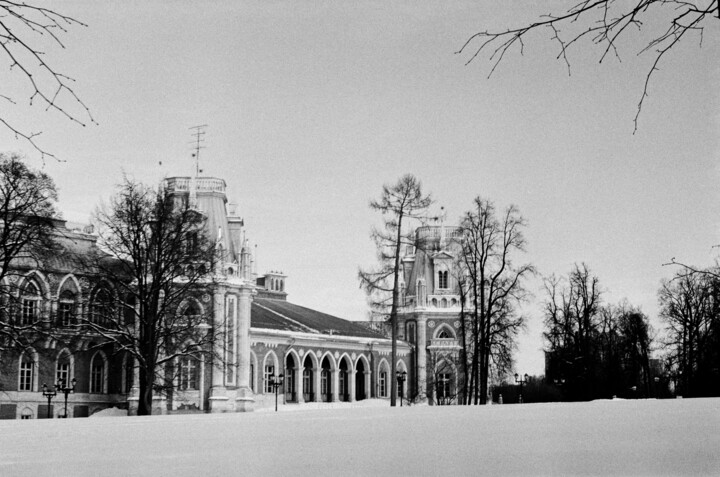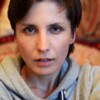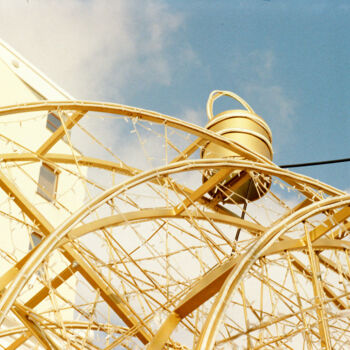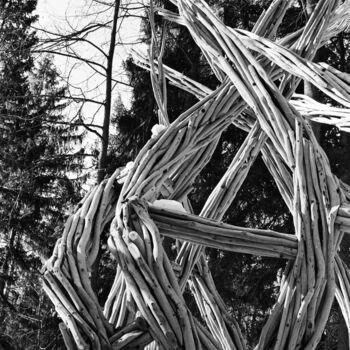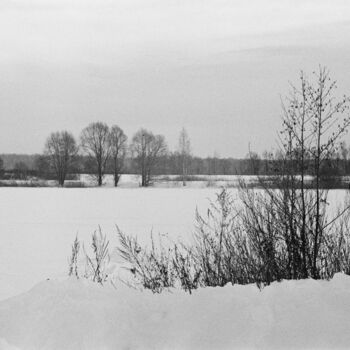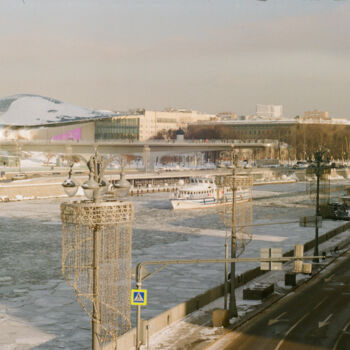The sky above Tsaritsyno. Grand Palace (2024) Photographie par Ekaterina Kastalskaya
Cette impression est disponible en plusieurs tailles.
Vendu par Ekaterina Kastalskaya
Cette image est disponible pour téléchargement avec une licence
Vendu par Ekaterina Kastalskaya
-
Ce travail est une "Open Edition"
Photographie,
Giclée / Impression numérique
- Dimensions Plusieurs tailles disponibles
- Plusieurs supports disponibles (Papier d'art, Impression sur métal, Impression sur toile)
- Encadrement Encadrement disponible (Caisse américaine + sous verre, Cadre + sous verre acrylique)
- État de l'œuvre L'oeuvre est en parfait état
- Catégories Figuratif Urbain
It was an unusually sunny day for the last month of winter. On Sunday there are traditionally many people in the park, despite the frost. Muscovites and tourists are walking and skiing.
In the photo we can see the Grand Palace in Tsaritsyno.
The photo was captured on SFL T-42 ISO 400 black and white negative film. This is Tasma Type-42 aerial film with a large amount of silver.
The history of Tsaritsyno began in 1775, when Catherine II came to Moscow. While passing through Kolomenskoye, she admired the beauty of the Black Dirt estate belonging to Prince Sergei Dmitrievich Kantemir. The Empress bought the estate and renamed it "Tsaritsyno".
Catherine hires court architect Vasily Bazhenov to build the new residence. She entrusted him with the creation of a landscape park and palace buildings in the Moorish style.
Bazhenov spent 10 years passionately building the royal estate. According to his plan, the architectural buildings should have looked like a scattering of buildings that naturally fit into the landscape of the ancient park. The building materials used are red brick and white stone.
Imperial palaces were built: for the Empress and her heir son Paul, and later a smaller palace for her grandchildren. They were the main palace building.
In addition to them, the Middle and Small Palace for Catherine, the Grand Cavalier Building - the main building in the ensemble, for the Empress's courtiers, the Kitchen Building (Bread House), three cavalier buildings, the Chamber-Youngfer Building, as well as pavilions and bridges, a landscape park was planned.
With scarce funding, the architect had to take out loans on his own to keep the construction going. He had to constantly write letters to officials for additional funds.
The whole project was agreed with Catherine II in writing, and by 1785 it was almost ready, only the finishing of the buildings was missing, as the customer could not answer what to choose for it. Also the Clock Tower and the Stables Building were not built, as no consent was given for this.
On June 5, 1785 Catherine arrived in Moscow and for the first time saw Bazhenov's creation in reality. After staying at the estate for a little while and seeing some of the premises, the Empress left Tsaritsyno.
Catherine II's decision to rebuild completely finished buildings, previously approved by her, was unprecedented. The reason for this decision is still unclear and remains the main mystery of the Tsaritsyno estate. Vasily Bazhenov was dismissed from further construction, and the project was handed over to his pupil and assistant Matvey Kazakov. For Bazhenov, this certainly became a personal drama. He was removed from his position as court architect.
Six months later Kazakov presented a new palace project, which was approved. Bazhenov's palaces for the Empress, the heir and his children were completely dismantled, as well as the Chamber-Youngfer building. Matvey Kazakov built a luxurious palace in the style of classicism with Gothic elements: arched windows, pointed towers.
The new palace was built slowly due to insufficient funding. In 1793 the Empress ordered to remove the third floor and the throne room in order to save money. The Grand Cavalier Building is dismantled for building materials.
In 1796 Catherine died. By this time the Grand Palace was not completely ready, the roof was covered with a temporary black roof, the rooms were still unfinished. The new Emperor Paul came to Tsaritsyno in 1797, he did not like the estate, which was predictable. Everything that pertained to his mother was hated by him, and a decree was issued not to carry out any construction. All subsequent emperors did not express a desire to complete the Grand Palace and use it for its intended purpose.
At the beginning of the XIX century Tsaritsyno became a popular place for public walks. Some royal buildings were converted into inns and hotels. According to the designs of Vasily Bazhenov's pupil - architect Ivan Egotov, romantic pavilions, pavilions, grottoes and a ruin tower were built. The pavilions were equipped with tables and chairs for the public to relax.
At the end of the XIX century, the buildings turned into summer houses and lost their historical appearance: terraces and barns were added to them. The New Tsaritsyno dacha settlement emerged, where many celebrities lived.
After the revolution of 1917 on the territory of Tsaritsyno the village of Lenino was created. Some palace buildings housed communal apartments, a club, a house of culture, a museum. In 1960 Lenino became part of Moscow.
Large-scale restoration of the buildings, except for the Grand Palace, began in the mid-1980s. In 2004 Tsaritsyno Park was transferred to the balance of the city of Moscow. In 2005, a large-scale and rapid restoration of the Grand Palace and the park area began, despite the protests of restorers, art historians and architects. On September 2, 2007, on the Day of the City of Moscow, the renovated palace complex was inaugurated.
Thèmes connexes
Black And White PhotoAnalog Film PhotoWinter DaySnowscapeArchitecture
Ekaterina began photographing as a teenager at the age of 14. And of course, it was analog photography. Shooting on a Zenith, playing with exposure, developing and hand printing.
In the 2000's came the era of digital photography, and from the middle of the decade Ekaterina began to engage in reportage photography.
In 2016, she returned to analog photography again.
Now in her work she explores association as a way to connect pictures of the surrounding reality with sensory experience. Her photographs reference books she has read, movies she has watched, music videos, works of art, and simple stories that happen in everyone's life.
The genre of portraiture attracts her with its ability to show the human gaze and real emotion, be it joy, peace, tension, dramatic strife in the soul.
Ekaterina prefers to capture the moment when shooting and takes a film camera even on a simple walk in the park.
-
Nationalité:
RUSSIE

- Date de naissance : 1981
- Domaines artistiques:
- Groupes: Artistes Contemporains Russes

